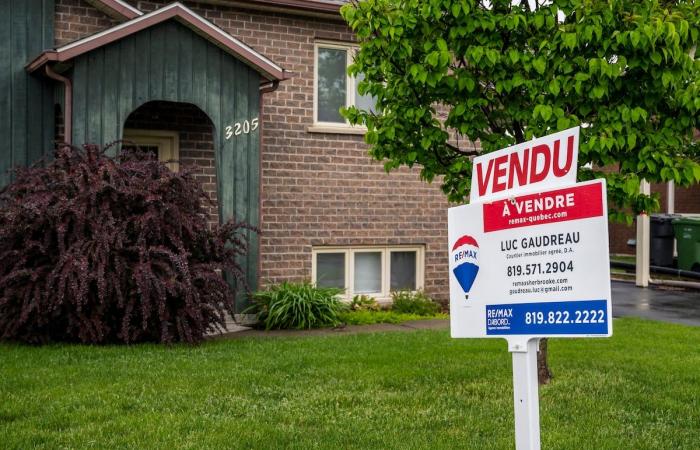Since last year, new property assessment rolls have shown record increases in almost every city. In this regard, Sherbrooke is no exception. However, there are places where the increase is greater than elsewhere. This is where Sherbrooke stands out.
The photograph of real estate values from July 1, 2023 shows an average increase of 58% in single-family homes in Sherbrooke. To compare, in Quebec, the jump was 30%. But in Gatineau, it was 78%. Phew!
According to the head of the assessment division of the City of Sherbrooke, Éric Du Perron, this demonstrates the “desirability” of Sherbrooke, that the region is attractive and that the residences are of good quality. Sherbrooke should be proud of its value.
It is true that for a household that has financial stability, that the mortgage repayment is going well, or even fully paid, this increase is an enviable gain in their assets, an asset that could be transformed into an important financial advantage over time. time of sale.
Except that for a household trying to buy a first residence, a condo or rent accommodation, access has suddenly become even more difficult. For this population, the affordability of Sherbrooke was an advantage and this advantage no longer exists.
For example, just four years ago, in 2020, the average value for a single-family residence in Sherbrooke was $233,800, or 16% less than a similar house in Quebec, which was then around $270,000. .
In 2024, this residence is now valued at $415,700 in Sherbrooke and $415,900 in Quebec. The difference is now just 0.05%.
As for apartment buildings, the average jump is 51.6% for buildings with two to five units, 31% for six to 20 units and 32.4% for 21 units and more. (Maxime Picard/Archives La Tribune)
In Trois-Rivières and Saguenay, cities of similar sizes, and despite record increases there too, the average values of single-family residences are around $336,700 and $301,500, respectively.
In a few years, Sherbrooke has risen to the top of the least affordable cities, behind Montreal and its suburbs, Gatineau and Quebec.
What impact will this have on the region? Obviously, everything is not black and white, there are positive repercussions, but also negative impacts.
Some employers will no longer be able to boast about the cost of living in Sherbrooke, but some workers may have a better retirement.
Movements
Several factors must contribute to this. Sherbrooke is not very far from Montreal. Estrie has several attractions, whether for the outdoors, the beauty of the landscapes, universities, etc.
We bring back the pandemic a lot to explain this jump worthy of a pole vault. It is true that the pandemic has created a population movement. Many people have reevaluated their lives, their priorities, their needs, their comfort.
This movement also stimulated real estate speculation and we don’t talk about that. Yet this factor clearly contributed. The Canada Mortgage and Housing Corporation (CMHC) considers that the influence of flips – or rapid resales in plain English – is minimal, because even if these transactions have jumped 28% since 2020, they would only represent 3% of transactions.
It seems to me that this underestimates the influence of rapid resales. No need to be a quick resale per se to be part of the movement. For example, CMHC also notes that properties at the heart of rapid resale transactions in Montreal show price increases three times higher than the rest of the market.
The real estate market is a market of comparisons. It is enough for a few houses or apartment buildings to display an overvalued sales price for others to follow.
The possibility of buying a first home is becoming more and more difficult in Sherbrooke. (Jessica Garneau/Archives La Tribune)
Let’s get back to people’s ability to pay. Between 1980 and 2021, the average price of a residence in Quebec has multiplied by 8.72 times. The problem is that for the same period, the average household salary is only 4.25 times higher.
Let’s present the numbers another way. In 1980, the average price of a residence was approximately 2.5 times the average annual income. In 2021, the average price of a residence represented 4.7 times the average annual income.
This new evaluation role therefore confirms this trend inherent to our system. The richest people will get even richer and the most disadvantaged people will get even more.
In the midst of the housing crisis, this may not be such good news.
To respond to this column, write to us at [email protected]. Some responses may be published in our Opinions section.







